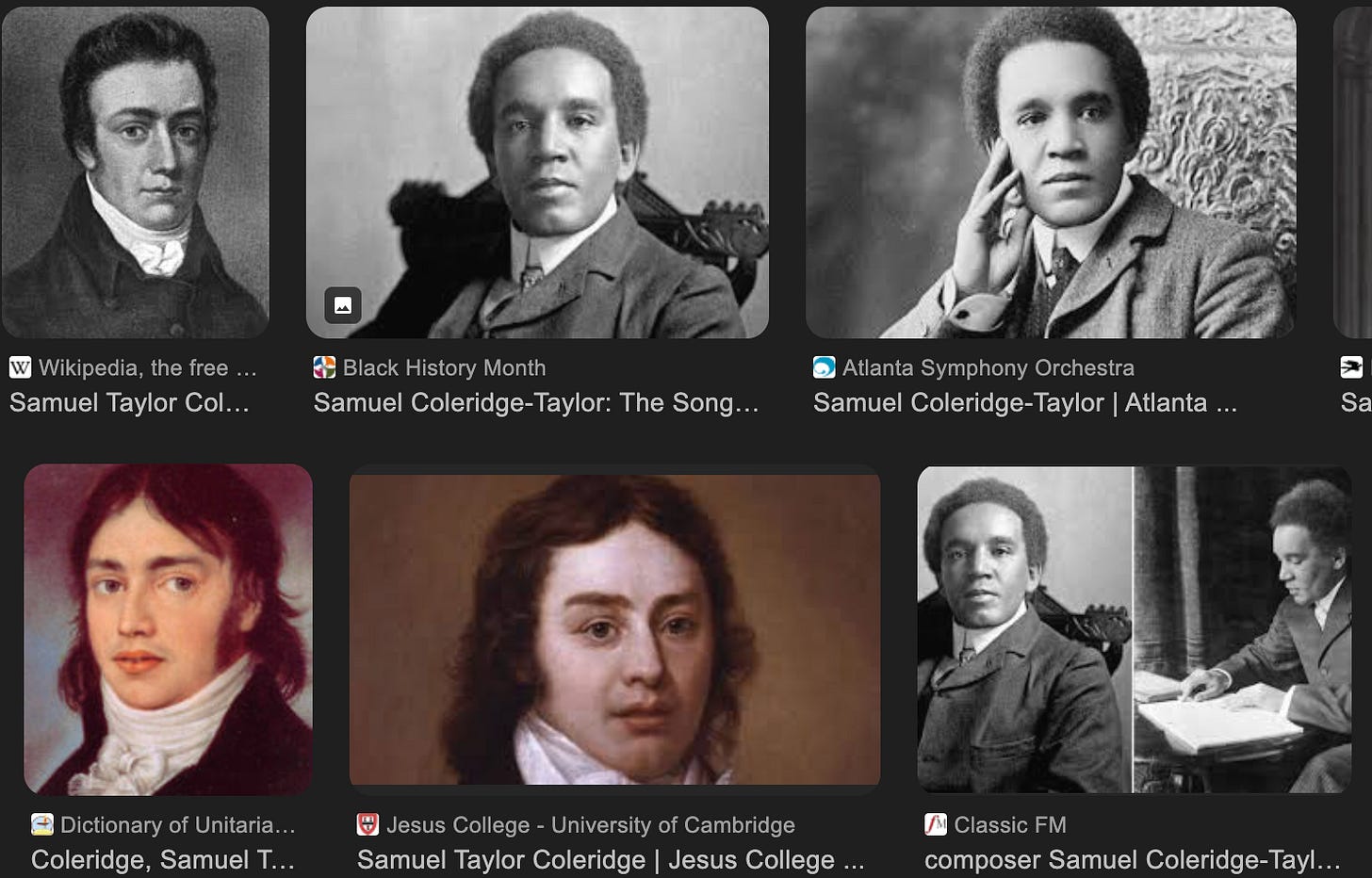From Samuel Taylor Coleridge to Samuel-Coleridge Taylor to Beyoncé
Diversity in classical music.
From the New York Times (non-opinion):
A Black Composer Was a Star, Then Faded. Is It Time to Shine Again?
Samuel Coleridge-Taylor devotees are working to revive his music and legacy coinciding with the 150th anniversary of his birth.
In case you are wondering, half-black British composer Samuel Coleridge-Taylor (1875-1912) was not British poet Samuel Taylor Coleridge (1772-1834), author of Xanadu and Rime of the Ancient Mariner.
By Eleanor Stanford
Reporting from London
Oct. 28, 2025
… Coleridge-Taylor was a Black British composer, conductor and virtuoso violinist who became a hugely respected figure during his short life by integrating European Romantic style with musical traditions associated with his West African heritage. …
His most famous work was a trilogy of cantatas written between 1898 and 1900 — “The Song of Hiawatha” — which was widely celebrated in the United States.
American Indians were more culturally fashionable than blacks in 1900.
The trilogy inspired the formation, in 1901, of the Samuel Coleridge-Taylor Choral Society, a pioneering group of Black musicians in Washington.
Coleridge-Taylor made several trips to the United States, including in 1904, when the choral society invited him to conduct a performance of “Hiawatha,” accompanied by the United States Marine Band. As part of the trip, the composer stopped by the White House for a meeting with President Theodore Roosevelt.
Such an invitation reflects how respected Coleridge-Taylor was, and the fact that “Hiawatha,” which is based on a poem by Henry Wadsworth Longfellow, was one of the most popular choral works of its time, trailing only Handel’s “Messiah” and Mendelssohn’s “Elijah,” according to the musicologist Lionel Harrison, who has researched Coleridge-Taylor since the 1970s.
But while those works, and their composers, have continued to take central positions in the Western classical canon, Coleridge-Taylor’s star has dimmed.
“It’s a story that we see very, very often,” Kanneh-Mason said, adding, “There are biases that people have, and you see that especially in classical music,” whose most-performed composers are overwhelmingly white.
Of course, there are also countless white male composers who achieved some degree of celebrity in their own time, but who are today far more forgotten than Samuel Coleridge-Taylor, who, along with Florence Price (1887-1953), now carries the banner of Diversity at classical music stations.
Obscurity is the fate of just about every artist. It’s not just that you are competing with the most famous works of the most famous composers of all time, but you are also competing with a huge number of really good but not quite immortal composers, all the Salieris to the few Mozarts, and with the not quite best works of the best composers.
For example, consider opera composer Rossini, creator of The Barber of Seville, deservedly one of the five or ten most famous operas ever.
But Rossini also composed 38 other operas.
For example, back during Trump’s first term, the Pacific Opera Project put on a highly entertaining production, only the second ever in United States history, of Rossini’s forgotten 1816 comic opera The Gazette about a brash and bumptious, but kind of lovable hotel-owner addicted to getting his name in the tabloid headlines.
Paywall here.
Keep reading with a 7-day free trial
Subscribe to Steve Sailer to keep reading this post and get 7 days of free access to the full post archives.


